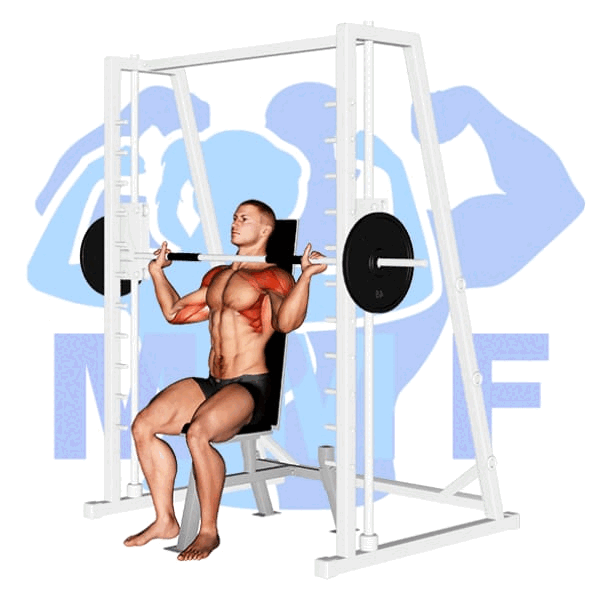Many gym-goers struggle with weak hips, and one common exercise that can help strengthen them is the lever seated hip abduction. However, it can be challenging to execute this movement correctly, and improper form can lead to injury or little progress. The good news is that you’re not alone in your struggles, and with a little guidance and practice, you can master this exercise and experience stronger, more resilient hips. In this blog post, we’ll dive into the details of the lever seated hip abduction, including proper form, common mistakes, and tips for maximizing your results.
Lever Seated Hip Abduction (Machine) Summary
- Primary Muscles: Gluteus Medius
- Secondary Muscles: Gluteus Minimus and Tensor Fasciae Latae
- Equipment: Hip Abduction Machine
- Mechanics Type: Isolated
- Force: Push
- Utility: Auxiliary

Lever Seated Hip Abduction (Machine) Instructions
- Sit on a bench or chair with the legs slightly apart.
- Place the back of a lever underneath the inside of the thigh near the knee.
- Put both hands on the lever and press down, lifting the leg up and out to the side.
- Hold for a count of five, then slowly return to starting position.
- Repeat with the other leg.
Video Tutorial
Lever Seated Hip Abduction (Machine) Muscles
Target (Agonist)
- Gluteus Medius
Synergists
- Gluteus Minimus
- Tensor Fasciae Latae
Dynamic Stabilizers
- None
Stabilizers
- None
Antagonist Stabilizers
- None
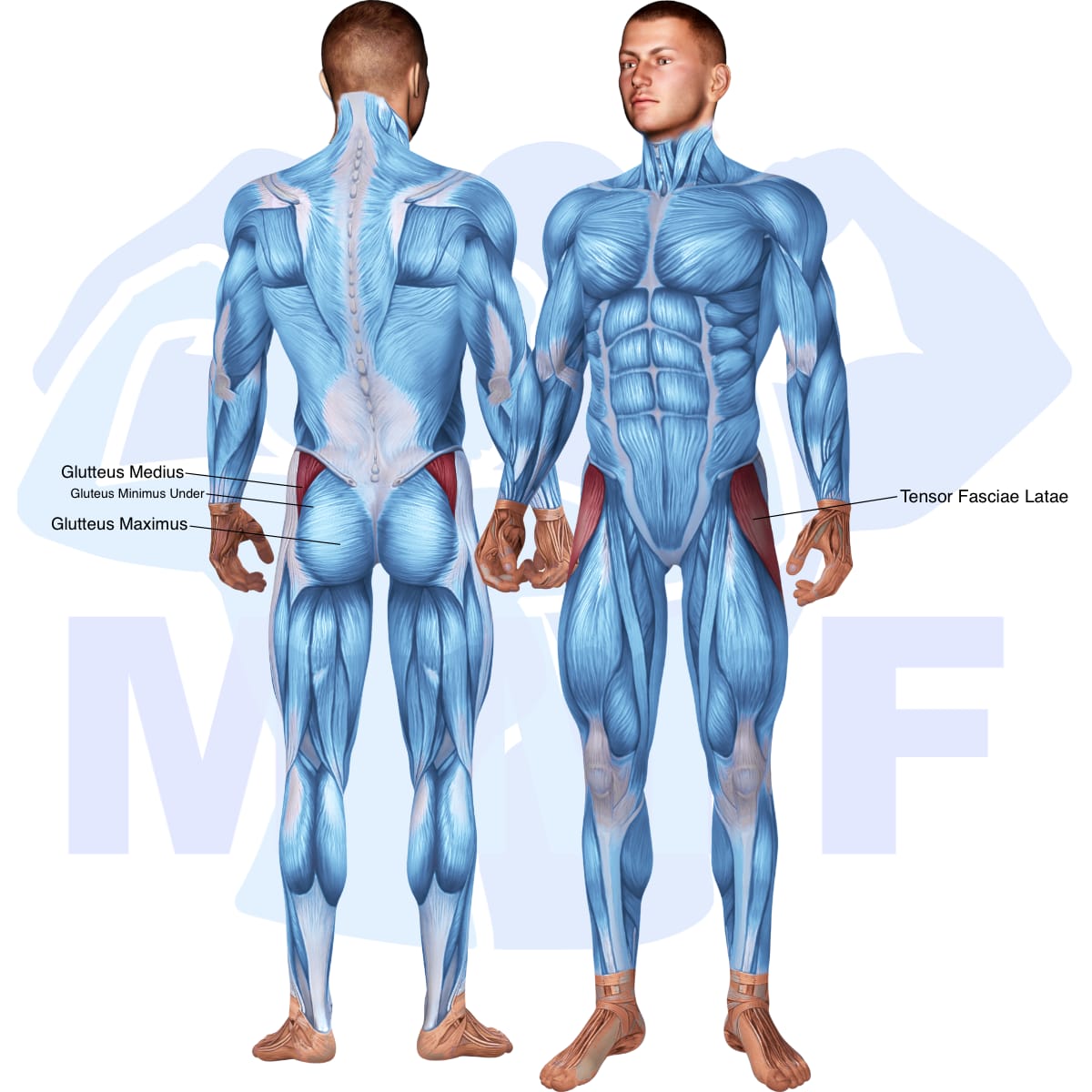
Benefits of Lever Seated Hip Abduction (Machine)
The Lever Seated Hip Abduction (Machine) exercise is an excellent way to target the Gluteus Medius muscle, which is responsible for hip abduction and outward rotation. This exercise helps to strengthen the glutes, improve posture and stability, and protect the lower back from injury. It also helps to increase mobility in the hip joint, as well as improve overall muscular balance and stability. The Lever Seated Hip Abduction (Machine) is a great addition to any strength training or fitness routine and can help to ensure that the Gluteus Medius is performing optimally.
Tips for Performing Lever Seated Hip Abduction (Machine)
Lever Seated Hip Abduction can help you get the toned glutes and legs you desire. To ensure that you get the most out of your workout, here are some helpful tips to keep in mind. These tips will help you maximize your workout and get the best results.
- Make sure to keep your posture correct while performing the exercise. To ensure proper form, focus on keeping your spine straight and engaging your core muscles. This will help you maintain proper alignment and make sure the exercise is targeting the right muscles.
- Keep your movement slow and controlled. This exercise requires small, precise movements, so focus on keeping your movements slow and controlled throughout the entire range of motion. Doing so will help you engage the right muscles and increase the effectiveness of the exercise.
- Focus on squeezing your glutes at the top of the movement. At the top of the movement, focus on squeezing your glutes to ensure that you are getting the most out of the exercise. This will help target the right muscles and maximize the results of your efforts.
Benefits and Tips Video
Frequent Mistakes To Avoid
It’s important to remember that the Lever Seated Hip Abduction exercise is beneficial for getting fit, but there are some common mistakes that can diminish its effectiveness and even lead to injury. To ensure the best results, it’s important to avoid these mistakes and take the necessary precautions. Here are some of the most common errors to watch out for:
- Not engaging the core: It is important to engage the core to ensure that the spine remains in a neutral position and the movement is coming from the hip joint and not from the lower back.
- Not using full range of motion: To ensure maximum effectiveness of the exercise, be sure to move through a full range of motion, taking care not to lock out the knees or hyperextend at the hip joint.
- Using too much weight: Too much weight can put unnecessary strain on the lower back and knees, leading to injury. It is important to use only a light to moderate weight that allows you to perform the exercise with good form.
Find More Machine Exercises Here
Variations and Complementary Exercises
The Lever Seated Hip Abduction (Machine) is a great exercise for strengthening the muscles around the hips and glutes, however, there are other exercises that can help target these same muscles. Below are some variations, complementary, or alternative exercises for the Lever Seated Hip Abduction (Machine) that can help you strengthen and tone your muscles.
Barbell Straight Leg Deadlift
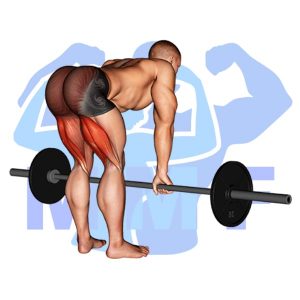
The Barbell Straight Leg Deadlift is a compound exercise that targets the hamstrings, glutes, and lower back muscles. This exercise is a great alternative or complementary exercise to the Lever Seated Hip Abduction machine. It allows you to perform a full range of motion in the hips, allowing for more complete hip activation than the machine. The Barbell Straight Leg Deadlift also helps to build strength and stability in the lower body and core, which can help to improve overall performance. Additionally, the exercise can help to improve posture and balance, making it a great choice for those looking to improve their overall fitness.
Barbell Stiff Legged Deadlift
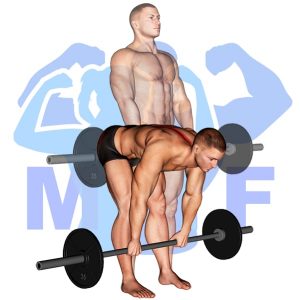
The Barbell Stiff Legged Deadlift is a great complementary or alternative exercise for the Lever Seated Hip Abduction (Machine). It targets the same muscles in the hips and thighs as the hip abduction machine, but with a different approach. By having to use your own bodyweight to raise and lower the barbell, you are forced to engage your core and leg muscles more than with the machine. Additionally, you can increase the intensity of the exercise by adding more weight to the barbell. This makes it an ideal exercise for those who want to challenge their hip and thigh muscles in a different way.
Barbell Wide Stance Stiff Leg Deadlift

The Barbell Wide Stance Stiff Leg Deadlift is an excellent complementary exercise to the Lever Seated Hip Abduction (Machine). It helps to target the same muscles in a different way, while also working the glutes and hamstrings. The Barbell Wide Stance Stiff Leg Deadlift forces the user to use the muscles in their legs and back in order to keep their form while lifting, while the Lever Seated Hip Abduction (Machine) allows for a more controlled and targeted movement. The Barbell Wide Stance Stiff Leg Deadlift is an effective alternative to the Lever Seated Hip Abduction (Machine) because it targets all of the same muscles, but in a different way.
Check Out These Top Machine Exercises
Dumbbell Single Leg Deadlift

The Dumbbell Single Leg Deadlift is an excellent complementary or alternative exercise to the Lever Seated Hip Abduction (Machine). It focuses on strengthening the glutes and hamstrings while also improving balance and coordination. This exercise is performed by standing on one leg while holding a dumbbell in the opposite hand. The athlete then slowly lowers their torso forward while bending the supporting leg and keeping the opposite leg straight. The athlete should keep their back flat throughout the entire movement to ensure proper form. The Dumbbell Single Leg Deadlift provides an effective alternative to the Lever Seated Hip Abduction (Machine), as it focuses on different muscles and requires greater balance and coordination.
Dumbbell Straight Leg Deadlift

The Dumbbell Straight Leg Deadlift is a great complementary or alternative exercise for the Lever Seated Hip Abduction (Machine). This exercise works the glutes, hamstrings, and lower back muscles to provide a balanced workout. It also helps improve your balance and coordination as you lift the weights. The main difference between this exercise and the Lever Seated Hip Abduction (Machine) is that it involves both the hip extension and flexion, which makes it a more comprehensive exercise. Additionally, because the weight of the dumbbells is low, it allows you to focus on your form and control the movement, which is important for preventing injury.
Find More Glutes Exercises Here
Opposing Complementary Exercises
To further enhance the effects of the Lever Seated Hip Abduction (Machine), try incorporating exercises that use opposing muscle groups. This will help to create a balanced workout and strengthen the surrounding muscles. The following exercises will work the opposite muscles as the exercise Lever Seated Hip Abduction (Machine).
Lever Seated Hip Adduction (Machine)
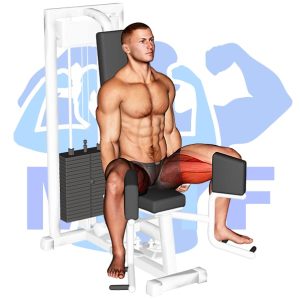
The Lever Seated Hip Adduction (Machine) is an effective exercise to work the inner thigh muscles and hip adductors. It is a great complement to the Lever Seated Hip Abduction (Machine), which works the outer thigh muscles and hip abductors. By performing both exercises, you can ensure that the entire hip area is being worked, balancing the muscles and helping you to achieve a strong and stable core. The Lever Seated Hip Adduction (Machine) strengthens the inner thigh muscles and hip adductors, allowing for a greater range of motion and improved stabilization of the hip joint. This exercise can be used to help prevent injury and improve overall performance.
Cable Hip Adduction

Cable Hip Adduction is an effective exercise to complement Lever Seated Hip Abduction (Machine). This exercise works the adductor muscles of the hip, which are the opposing muscle group to the abductor muscles of the hip used in the Lever Seated Hip Abduction (Machine). Cable Hip Adduction strengthens and tones the inner thigh muscles, while also helping to improve balance, stability, and coordination. This exercise helps to promote symmetry between the left and right sides of the body, making it an ideal complement to Lever Seated Hip Abduction (Machine). By combining both exercises, you will be able to achieve greater strength and stability in your hips.
Barbell Sumo Squat

The Barbell Sumo Squat is an excellent exercise for strengthening the inner thighs, glutes, and hamstrings, and is a great complement to the Lever Seated Hip Abduction (Machine) exercise. By using the opposing muscle group, the Barbell Sumo Squat works the quads, hip flexors, and adductors in order to help balance out the strength in the lower body. It also helps to improve posture and stability, as well as providing an effective way to tone and strengthen the legs.
Hip-Hip Hooray for Lever Seated Hip Abduction!
Hip-hip hooray for lever seated hip abduction! This exercise is a great way to strengthen the muscles in your hips and glutes. With regular practice, you’ll notice improved stability and mobility in your lower body. The lever seated hip abduction is easy to perform and can be modified to fit your fitness level. Add it to your routine and see the benefits for yourself!
References: Wikipedia | ExRx.net | PubMed.gov | Comprehensive List of Glutes Machine Exercises

